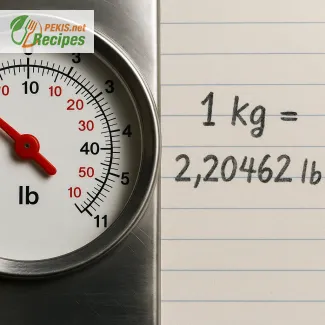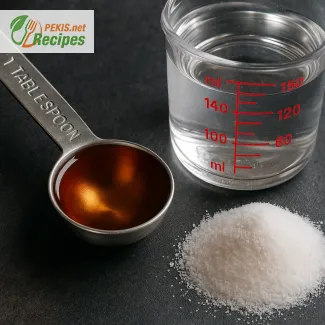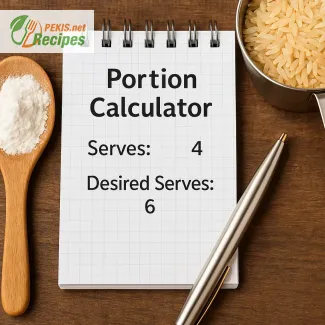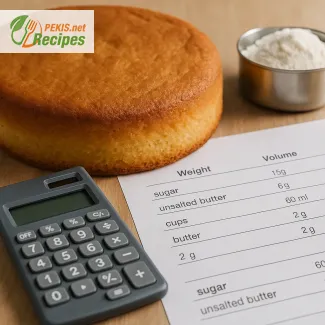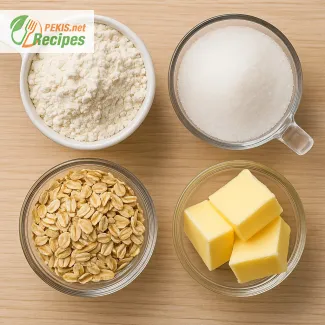
Converting 100 grams to cups depends on the ingredient’s density. For example, flour equals about 0.8 cups, sugar about 0.5 cups, and butter roughly 0.45 cups. The difference comes from how heavy or light each ingredient is per volume. Using a kitchen scale guarantees the most accurate results, while conversion charts provide a quick solution. Mastering these conversions ensures precision, consistency, and better baking outcomes across recipes from different traditions.
Understanding 100 grams to cups in everyday baking
Why 100 grams matters in the kitchen
When you see 100 grams in a recipe, the next question is often “how many cups is that?”. Bakers and home cooks rely on clear conversion tables because not every ingredient has the same density. 100 grams of flour does not equal the same volume as 100 grams of sugar or butter. Learning these conversions saves time, reduces errors, and ensures consistent results.
The origin of gram-to-cup conversions
The gram was introduced in France during the late 18th century as part of the metric system, designed to create a universal and precise measurement standard. The cup, on the other hand, developed in domestic kitchens, particularly in the United States, where volume-based measures were easier for everyday cooking. This blend of metric precision and cup practicality created today’s frequent need for 100 grams to cups conversions.
Common conversions for 100 grams
Because each ingredient has a different density, here are practical examples of how 100 g in cups translates:
- 100 grams of all-purpose flour ≈ 0.8 cups
- 100 grams of granulated sugar ≈ 0.5 cups
- 100 grams of butter ≈ 0.45 cups
- 100 grams of oats ≈ 1.1 cups
- 100 grams of rice (uncooked) ≈ 0.5 cups
- 100 grams of cocoa powder ≈ 0.85 cups
These values can vary slightly depending on how tightly ingredients are packed.
Practical ideas for accurate conversions
- Use a digital kitchen scale whenever possible to avoid mistakes.
- Level off dry ingredients with a flat edge for a consistent measure.
- Remember that sifted flour weighs less per cup than unsifted flour.
- Sticky ingredients like honey or peanut butter benefit from weighing, since volume measures are harder to standardize.
Entities and related concepts
Food science links grams, cups, density, and ingredient composition. Understanding these entities helps create precise outcomes:
- Density: flour is lighter, sugar is heavier.
- Moisture content: butter or oils have different ratios.
- Granule size: powdered vs. coarse sugar.
Simple tricks for everyday use
- Flour: 100 g ≈ 0.8 cups – ideal for cakes and cookies.
- Sugar: 100 g ≈ 0.5 cups – perfect for desserts or sauces.
- Butter: 100 g ≈ 7 tbsp – helpful for pastries.
- Cocoa powder: 100 g ≈ 1 cup when loosely packed.
Inspiration from traditional and modern kitchens
- In European baking, grams are the gold standard, ensuring exact proportions.
- In American home cooking, cups dominate, offering a faster approach.
- Fusion recipes often require cross-measuring between systems, making a conversion guide essential.
- Modern cookbooks increasingly provide both grams and cups, bridging the gap between precision and convenience.
Practical combinations for better results
- Mix metric precision with volume convenience: weigh flour but measure liquids by cups when speed matters.
- Store a printed chart in your kitchen for quick reference.
- Try hybrid methods: weigh critical ingredients (flour, sugar) and measure flavorings (spices, herbs) by teaspoons or tablespoons.
Knowing how to convert 100 grams to cups empowers bakers and cooks to move confidently across recipes from different cultures. By mastering simple ratios and understanding the history behind measurements, you gain flexibility, accuracy, and consistency in every dish.
FAQ questionHow many cups is 100 grams of flour?
For all‑purpose flour, use the spoon‑and‑level method: 100 grams ≈ 0.8 cups (about ¾ cup + 1 tbsp). Flour is airy, so packing or scooping straight from the bag can change volume and throw your dough or batter off. Weighing is the most reliable approach.
FAQ questionHow many cups is 100 grams of sugar?
For granulated sugar, 100 grams ≈ 0.5 cups. Sugar crystals are dense and settle uniformly, so its cup measure is more consistent than flour. For brown sugar (packed), 100 grams ≈ 0.45 cups, because 1 packed cup weighs more.
FAQ questionHow many cups is 100 grams of butter?
Butter is measured by volume in tablespoons or by sticks in some regions. Since 1 cup butter ≈ 227 g, 100 grams ≈ 0.44 cups (about 7 tbsp). Softening butter doesn’t change its mass; it only affects how easily it packs into a cup.
FAQ questionIs 100 grams the same in cups for every ingredient?
No. Cups measure volume, while grams measure mass. Ingredients vary in density and granule size, so 100 grams of flour, sugar, oats, rice, cocoa, or butter all occupy different cup volumes. That’s why weight is the gold standard for accuracy.
FAQ questionWhy do charts disagree about 100 g to cups?
Two main reasons: (1) different reference densities (brands, processing, moisture), and (2) different measuring methods (scooped vs. spoon‑and‑level, packed vs. loose). Use charts as a guide, but verify with a kitchen scale when precision matters.
FAQ questionDo sifted or packed ingredients change the cup value?
Yes. Sifted flour traps more air, making 1 cup weigh less; packed brown sugar weighs more per cup. Always follow the descriptor in the recipe (e.g., sifted, loosely packed, packed) or default to weighing.
FAQ questionWhat’s the difference between a US cup and a metric cup?
A US cup = ~236.6 ml, a metric cup = 250 ml. That 5–6% gap can affect baking consistency, especially with larger quantities. If your recipe lists grams, prefer the scale; if it lists cups, try to match the cup system used by the author.
FAQ questionCan I convert 100 g to cups without a scale?
Yes, with a reference density:
- Flour: ~120 g per cup ⇒ 100 g ≈ 0.83 cups
- Sugar (granulated): ~200 g per cup ⇒ 100 g ≈ 0.5 cups
- Butter: 227 g per cup ⇒ 100 g ≈ 0.44 cups
- Rolled oats: ~90 g per cup ⇒ 100 g ≈ 1.1 cups
These are approximations; expect small variations.
FAQ questionAre liquid cups different from dry cups?
The cup is the same volume unit, but the tools differ: liquid cups are designed for pouring and reading at eye level; dry cups are intended to be filled and leveled. Use dry cups for flour, sugar, oats; use liquid cups for milk, oil, water. For butter, treat it like a solid unless melted.
FAQ questionQuick rule of thumb for 100 g conversions?
Memorize a few anchors: flour ~120 g/cup, sugar ~200 g/cup, butter 227 g/cup, oats ~90 g/cup. Then compute cups = grams ÷ grams‑per‑cup. With 100 grams, you’ll get a fast, close estimate for most pantry staples.
PEKIS – a professional chef and recipe developer with more than 25 years of experience, specialized in European and international cuisine. For this topic, I draw on years of working with both metric and imperial measurements, helping bakers and home cooks easily switch between grams and cups for reliable results in the kitchen.
